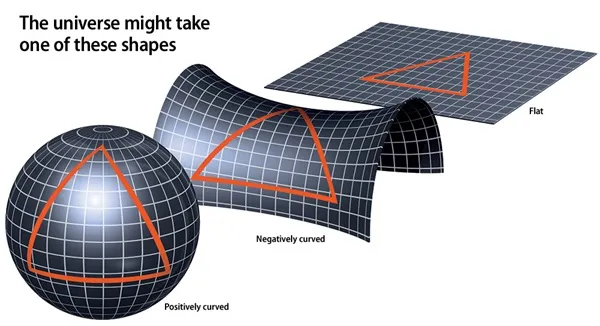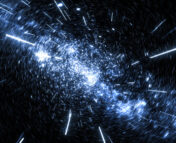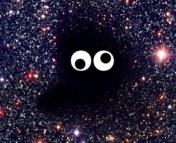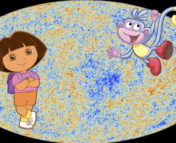Title: Investigating undergraduate students’ ideas about the curvature of the Universe
Authors: Kim Coble, Mallory Conlon, Janelle M. Bailey
First Author’s Institution: San Francisco State University, San Francisco, California 94132, USA
Status: Published June 2018 in Physical Review Physics Education Research
If you were to tell someone the universe is flat, you would probably be mistaken for a conspiracy theorist. After all, the universe is very clearly three-dimensional! But the truth is the universe is flat, at least in cosmological terms. The problem is most people don’t understand what that means. In today’s Astronomy Education Research paper, introductory astronomy students were given a chance to share how they think about the curvature of the universe, and as you might imagine, their understanding wasn’t always correct. But before we get into the education side, let’s start with a little cosmological background.

When we talk about the universe being flat, we mean that it obeys Euclidean geometry. Imagine drawing a line from the earth’s equator to the north pole. Then, turn 90 degrees and go back to the equator. Turn 90 degrees again, and you’ve ended up at your starting point. You’ve drawn a triangle with internal angles adding up to 270 degrees. But we all learned in middle school geometry that triangles have 180 degrees! As it turns out, that only holds in Euclidean geometry when you’re drawing on a nice flat piece of paper. But once you start playing with curved surfaces, the rules go right out the window (see Figure 1). So, if our universe obeys Euclidean geometry, a giant triangle drawn across it would have 180 degrees. This may seem like an almost impossible concept to test, but using the cosmic microwave background as well as other astrophysical measurements, we can effectively draw that triangle, and the evidence we have points towards a flat universe.
Let’s Talk to Some Students
But not everybody is up-to-date with the universe’s curves. Today’s paper surveyed over 500 undergraduate students in introductory astronomy or ‘ASTRO 101’ courses across three institutions. The goal? To uncover what preconceptions students have about the shape of the universe. The researchers gave the students open-ended survey questions at the beginning of the semester, asking what the shape of the universe is and what evidence we have for it. After the surveys, nine students were interviewed to obtain more detailed information about their understanding. The data analysis was conducted using qualitative research methods because of the use of open-ended surveys and interviews. To unpack trends, the researchers coded the data by identifying themes across student responses. These themes were labeled with a code. You can see the codes they chose for the pre-instruction survey, as well as examples of student responses, in Table 1.

What Did They Find?
The big result was that a majority of students thought the universe was round prior to taking ASTRO 101. Their reasoning varied from appeals to authority (such as “I think I read it somewhere”) to the fact that there are so many round objects in the universe. Who would have thought that not being a flat-earther could be a detriment when it comes to understanding cosmology? Some students also referenced the idea of the Big Bang as an explosion out from a central point, lending spherical imagery. Students also expressed a lot of skepticism about our ability to measure the curvature of the universe. As one student interviewed stated, “Everything I’ve ever seen about…the shape of the universe was pure speculation.”
At one of the three institutions, students were also given a survey at the end of the course. In contrast with the survey administered at the beginning of the semester, most students said the universe is flat, although over 25% still stated that it was round. In an interview after the course, a student was able to articulate that while they initially thought the universe was spherical, they’ve “…come to understand that the Universe has no center and no boundaries.” This result suggests that students are able to update their understanding of difficult astronomical concepts after introductory-level classes.
So why does this matter? ASTRO 101 is one of the most popular gen-ed science courses, and for many students, it will be the last science class they ever take. Research like this is important to help instructors understand what prior knowledge students bring to the course and what preconceptions may need to be addressed in their curriculum. While this work focuses on a very particular scientific concept, it is part of a larger project studying student ideas across a broad range of astronomy topics.
Astrobite edited by Sowkhya Shanbhog
Featured image credit: ESO/J. Law




